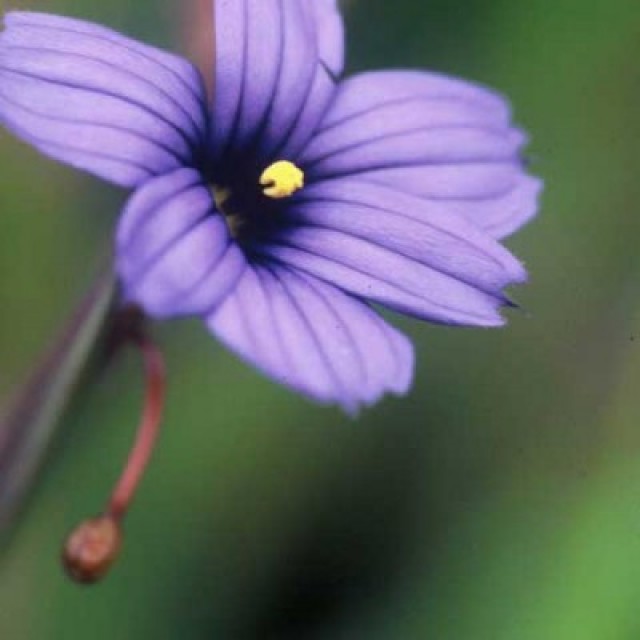COMMON NAME
Western blue-eyed grass
SCIENTIFIC NAME
Sisyrinchium bellum
Plant family
Iris (Iridaceae)
Plant group
Wildflowers and Herbs
This drought resistant wildflower is related to iris. It varies in height from about 7 -46 m (3-18 in). The flowers are small and usually purplish-blue, but occasionally white-flowering plants are found. Individual flowers last only one day but are produced in great quantities. The leaves are narrow and sword-shaped (grass-like), occurring in fan-like sprays.
45 reports
23+
OBSERVERS
45+
OBSERVATIONS
Identification hints
There are 7 species (and a few varieties of species) of Sisyrunchium in California. The outer petals of S. bellum are widest at the tips (wedge-shaped), whereas the petals of S. idahoense are elliptic-shaped (narrow and pointed at tips). The dark blue-violet to light blue (or occasionally white) flowers of S. bellum contrast with the yellow flowers of S. californicum. If you are in California's Death Valley region (the northeast portion of the Mojave Desert), consult a field guide or local naturalist as you might be looking at the very similar-looking S. funereum (which has a translucent bract on the outer side of the petal that extends beyond the petal tip. In S. bellum, the translucent bract does not extend beyond the petal tip.)
Did you know?
Black oak trees do not generally begin producing acorns until they are 20 years old. According to the US Forest Service, Black oaks produce their best seed crops between 40 and 75 years of age.
DISTRIBUTION IN TH U.S.
California
,
Oregon
HABITAT
Found in many plant communities at elevations below 7874 ft (2400 m) throughout California (and into western Oregon). Blue-eyed grass is typically found in open, moist, grassy areas and woodlands.
ATTRIBUTES
Leaves
Leaves are dark-green, flattened, vary in number from few to many, and attach to the compact stem at the soil surface. Leaves appear grasslike, even though this plant is not a grass (it’s an Iris!). The leaf veins are parallel and run the length of the leaf blade, which can range greatly in length from 0.4 to 19 in (1 to 50 cm).
Flowers
The flowers can range in color from dark blue-purple to blue-violet or pale blue (and occasionally white). There are six petals per flower, and each petal has a notched tip (but occasionally a smooth tip). Once the central column appears in the center of the flower, yellow anthers will be found on top. The pistil (female reproductive parts) inside the central column) extends above the anthers when the stigma becomes receptive. The flowers are arranged in umbel-like (flat-topped) clusters at stem tips.
Fruits
The fruit is a capsule with three internal seed-containing chambers.
Bloom Time
Early to mid-spring, generally March to May but depends on latitude and elevation (earlier at lower latitudes and elevations, later at higher latitudes and elevations).
See Menu
- 2021 Chicago Botanic Garden. All Rights Reserved.
-
Creative Commons
BY-NC-SA 4.0 - Terms of Use
- Privacy Policy
- Data Sharing and Citation Policies
- 2021 Chicago Botanic Garden. All Rights Reserved.



